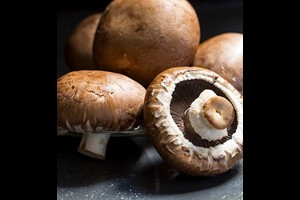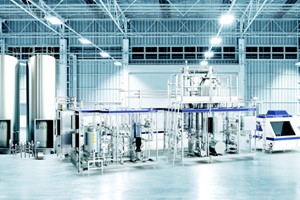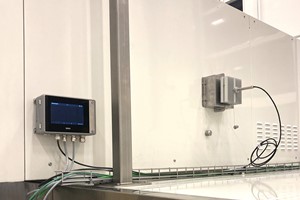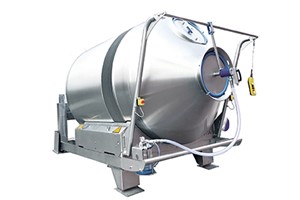Recent research has unveiled a surprising sustainable use for the waste left over from mushroom cultivation, suggesting it could play a significant role in water purification. Researchers from Utrecht University in the Netherlands have found that the residual waste from growing white button mushrooms can effectively remove contaminants from water.
A Novel Use for Mushroom Waste
"The nice thing about this waste stream is that it has a low value and so, we can make it more valuable," stated Brigit van Brenk, a researcher involved in the study. The study, published in April, highlights that the white button mushroom produces enzymes capable of degrading lignin, a polymer found in wood and plants. These enzymes can also break down other substances, presenting an opportunity to repurpose mushroom substrate waste.
In the Netherlands, large quantities of this substrate have traditionally been sent to Germany for use as fertilizer. Recognizing the limited application of this waste, the researchers tested its effectiveness in removing various contaminants from water. They introduced eight different substances, including herbicides, caffeine, and pharmaceuticals, to water combined with mushroom substrate fragments. Remarkably, the study found that up to 90% of these organic micropollutants were removed from the water within a seven-day period.
Addressing Water Pollution Concerns
The findings are particularly relevant given the growing concerns around water pollution in the U.K. and other regions. Researchers from Brunel University London and the University of Portsmouth detected over 50 chemicals, including pharmaceuticals and pesticides, in seawater off England’s south coast. Furthermore, a 2023 report by the European Investment Bank (EIB) emphasized that conventional wastewater treatment methods do not fully eliminate micropollutants, and additional treatments incur significant costs.
In response to these challenges, EU lawmakers approved new measures for urban wastewater treatment in April, introducing a "polluter pays principle." This principle mandates that manufacturers of cosmetics and pharmaceuticals contribute to the costs of additional treatments required to reduce micropollutants. Despite these advances, similar regulations have yet to be implemented in England.
Advancements in Mycoremediation
Another study co-authored by van Brenk and published in May demonstrated that mushroom substrate and a "tea" made by soaking the substrate could remove textile dyes from water. This finding is part of a broader body of research exploring the potential of fungi in environmental cleanup, known as mycoremediation.
Fungi have shown promise in breaking down various pollutants. In the Amazon rainforest, fungi have been used to clean up oil spills. In California, oyster mushrooms have been employed to address environmental toxins following wildfires. In New Zealand, fungi have been used to treat soil contaminated by the pesticide PCP. Additionally, an architecture firm in Cleveland, Ohio, has explored using mushrooms to decompose abandoned houses.
Challenges and Future Directions
Despite these promising applications, widespread adoption of fungi-based environmental cleanup is limited by several challenges. Diane Purchase, a professor of environmental biotechnology at Middlesex University, highlighted the need for investment to integrate new treatment steps into existing wastewater systems. "A multidisciplinary approach working with environmental engineers and other stakeholders is needed to achieve this goal," she stated.
Micaela Mafla Endara, a biology researcher at Lund University in Sweden, emphasized the need for better connectivity between various research efforts in this field. "I think there is a disconnection between the work being done everywhere because of course there’s so many studies, so much work," she said. Endara's research has shown that fungi can have a "vacuum cleaner-effect" on nanoplastics in soil.
Industry and Commercialization
Several startups are harnessing the biodegrading power of mushrooms to tackle waste. Mycocycle, a U.S. firm, uses fungi to eliminate toxins from industrial waste, converting it into low-carbon raw materials. Swedish startup MycoMine operates a treatment plant that uses fungi to decompose pollutants, producing biomass that can be used as a renewable energy source.
The global data platform Dealroom reported that $2.5 billion has been raised over the last five years by 139 mycelium tech/fungi-based startups, a significant increase from 32 firms in 2015. These companies are developing mushroom-based products for various industries, including packaging and textiles.
Van Brenk plans to establish a company with mushroom substrate as the main product, emphasizing the critical importance of water purification. "Our water is our primary life source ... and if we are destroying our rivers then [we’re] probably also destroying our resource for drinking water," she said.
This research underscores the potential of mushrooms not only as a dietary staple but also as a sustainable solution for environmental challenges, particularly in water purification. The integration of mycoremediation techniques into existing systems could provide an innovative and cost-effective approach to managing water pollution and other environmental issues.
By: Vicky McKeever
https://www.cnbc.com/












